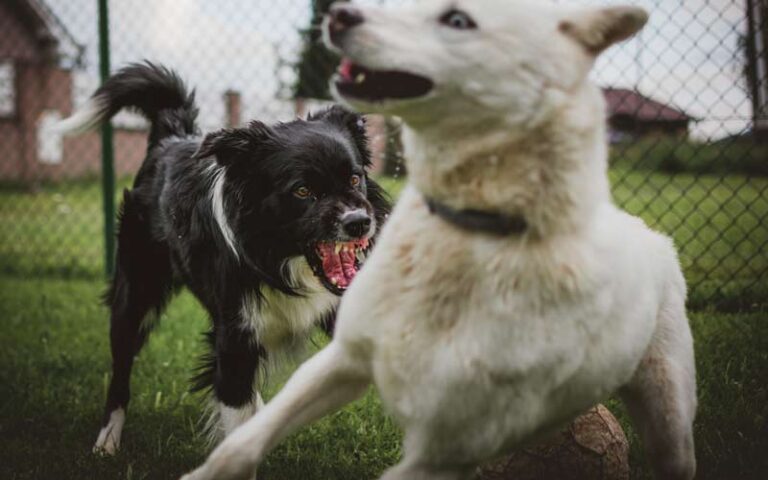If you’ve ever wondered how dogs learn during training, you’re in the right place. “Understanding Dog Psychology in Training and How Dogs Learn” is an insightful article where we explore dog psychology. It offers valuable insights into how dogs process information and acquire new skills. Whether you’re a dog owner, a trainer, or simply curious about these remarkable animals, this article will help you optimize your training methods and build a strong bond with your dog.
Understanding Dog Psychology in Training
Improving Communication with Your Dog
When training dogs, it’s essential to understand canine psychology. Dogs have unique instincts, behaviors, and ways of perceiving the world. By understanding their psychology, we can tailor our training methods to be more effective, ensuring a positive learning experience for our furry friends.
One key reason to understand canine psychology is to improve communication with our dogs. Dogs have their own language, and by understanding their psychology, we can learn to speak it. This helps us communicate our expectations and commands more effectively, making it easier for them to understand and respond appropriately.
Identifying and Addressing Behavioral Issues
Understanding canine psychology also helps us identify and address behavioral issues. Dogs, like humans, can experience anxiety, fear, and stress. By recognizing these emotions, we can take steps to alleviate them, promoting their well-being and creating a more conducive environment for training.
How Dogs Perceive and Process Information
Relying on Senses
To train a dog effectively, it’s crucial to understand how they perceive and process information. Dogs rely heavily on their senses, particularly smell and hearing. Their ability to detect scents and sounds far exceeds that of humans. By incorporating scent-based or auditory cues into our training methods, we can make training more engaging and stimulating for our dogs.
Observing Body Language
Dogs are also highly observant and responsive to body language. They pick up on subtle cues and gestures, making non-verbal communication an essential part of training. Understanding how dogs perceive and interpret body language allows us to convey our intentions and reinforce desired behaviors more effectively.
Learning Through Repetition and Consistency
Additionally, dogs learn through repetition and consistency. They thrive in structured environments where routines and rules are clear. By designing training sessions that are structured and consistent, we can reinforce positive behaviors and discourage undesirable ones.
The Role of Instincts in Dog Behavior
Social Hierarchies and Leadership
Instincts play a significant role in shaping canine behavior. Dogs are descendants of wolves, and many of their behaviors stem from their ancestral instincts. Understanding these instincts is crucial for effective training.
For example, dogs have a natural instinct to form social hierarchies. They respond well to clear leadership and structure. By establishing ourselves as their pack leader through consistent training and reinforcement, we can tap into this instinct and create a harmonious relationship based on trust and respect.
Prey Drive and Energy Redirection
Additionally, dogs have a strong prey drive, which can manifest in behaviors like chasing and hunting. Understanding this instinct allows us to redirect their energy and provide appropriate outlets, such as interactive play or scent-based activities.
How Dogs Learn: The Basics of Conditioning
To understand how dogs learn, it’s important to grasp the basics of conditioning in dog training. Conditioning involves training a dog to associate certain behaviors with specific outcomes. There are two main types of conditioning: classical conditioning and operant conditioning.
Classical Conditioning
Classical conditioning involves pairing a neutral stimulus with a naturally occurring stimulus to create a learned response. For example, if you consistently ring a bell before feeding your dog, eventually the sound of the bell alone will make your dog salivate.
Operant Conditioning
Operant conditioning relies on the use of rewards and punishments to shape a dog’s behavior. This type of conditioning involves reinforcing desirable behaviors and discouraging undesirable ones.
Positive Reinforcement: Rewarding Desired Behavior
Positive reinforcement is a powerful tool in dog training. It involves providing rewards, such as treats, praise, or play, to encourage and reinforce desired behaviors. When a dog associates a particular behavior with a positive outcome, they are more likely to repeat that behavior in the future.
For instance, if you want to teach your dog to sit on command, you can use positive reinforcement by giving them a treat every time they successfully sit. This positive experience makes the dog more likely to sit when commanded in the future.
Positive reinforcement not only strengthens the bond between the dog and the trainer but also creates a positive and enjoyable training experience for the dog.
Negative Reinforcement: Correcting Undesirable Behavior
While positive reinforcement focuses on rewarding desired behavior, negative reinforcement involves correcting or discouraging undesirable behavior. Negative reinforcement does not involve punishment or harsh methods; instead, it aims to redirect the dog’s behavior in a more appropriate direction.
For example, if your dog jumps on guests when they enter your home, you can use negative reinforcement by ignoring the dog when they jump and only providing attention when they keep all four paws on the ground. By doing so, you teach the dog that jumping does not result in attention, while calm behavior does.
Negative reinforcement can be highly effective in teaching dogs what behaviors are unacceptable while promoting positive alternatives.
Understanding how dogs learn is essential for successful dog training. By using both positive and negative reinforcement techniques, trainers can shape a dog’s behavior and create a harmonious bond between the dog and its owner. Remember to always be patient, consistent, and reward-based in your training approach.






